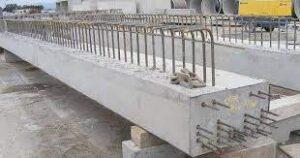
Concrete structures that are standard are prone to cracking and brittle. They crack easily and are unable to stand up to tension. This is the reason the reason why engineers from San Francisco patented prestressed concrete in 1886. This revolutionary method of pre-pressuring concrete results in stronger structures by reducing momentum or deflection and also improving the ability of the concrete to withstand greater force and pressures from outside. But, while prestressed concrete was in use for over a half-century priorto 1951 it was the very initial North American prestressed concrete project was completed in Philadelphia, Pennsylvania as the Walnut Lane Memorial Bridge. At Permacast we will be looking into the process of prestressed concrete. We will discuss how it’s created as well as its advantages, and the various uses that prestressed concrete can be employed for.
What is the Process by which Concrete Created? Concrete How is it made?
Prestressed concrete is produced via a pre-tensioning process or a post-tensioning procedure where compressive strain can be applied to the concrete. Steel tendons, for instance, high-strength steel wires or alloys, are stretched to increase the stress in the concrete for the most flexible and durable product.
Pre-Tensioning
Prior to the concrete mix being put into the mold to cure, the strong steel tendons are stretched between 70-80 percent of their total strength. After being stretched the concrete is then placed around the tendon to undergo curring, and the precasting procedure. When the concrete reaches its intended strength, based on the original design and these forces release and the steel can shrink back to its size. This is a transfer of forces that are prestressed to the steel as well as concrete since the concrete is in this pre-stressed state and strength even when it shrinks to its original size.
Post-Tensioning
In contrast to the pre-tensioning method post-tensioning permits the concrete mix to be poured, then dried first. After that, as the curved ducts are made using molds made from aluminum, plastic, or steel The concrete cures and becomes hard before the steel tendons being stretched into the ducts. Once the tendons made of steel are pulled.
